
How to Conduct Product Research? Reasons, Methods, and Process
In today's fast-paced product landscape, understanding your audience's needs, preferences, and pain points is more crucial than ever. Whether launching a new product or refining an existing SaaS product, the foundation of success is built on robust product research.
Successful product research equips product teams with a 360-degree view of the market and user landscape, enabling them to make informed, user-centric decisions at every stage of the product's lifecycle.
Product research is the initial stage before product development and helps turns assumptions into knowledge and risks into calculated strategies, improve product discovery, setting the stage for product success.
Dive in as we demystify the product research process, offering actionable insights and tools to ensure your product doesn't just find its market fit—it excels in it!
What is Product Research?
Product research is a systematic process of gathering, analyzing, and interpreting information to make informed decisions about a product's creation, modification, or positioning.
Product research aims to understand the market, identify potential opportunities, and ensure that a product meets the needs and preferences of its target audience to build a customer-centric company. Product research can encompass both new product development and improvements to existing products.
Critical Steps of Product Research
1.Market Analysis: Understanding the market size, growth rate, trends, and dynamics. This includes studying competitors' products, market share, strengths, and weaknesses.
2. Target Audience Identification: Defining the product's primary users or buyer personas. This involves understanding their demographics, needs, preferences, behaviors, and pain points.
3. Concept Testing: The concept is tested among potential users or a focus group for customer feedback before fully developing a product. This helps in refining the idea and gauging its potential success.
4. Feedback Portals: Create a centralized place for product feedback to track different types of customer feedback and improve SaaS products while listening to their customers. This is possible with Rapidr.
Rapidr helps SaaS companies be more customer-centric by consolidating feedback across different apps, prioritizing requests, having a discourse with customers, and closing the feedback loop.
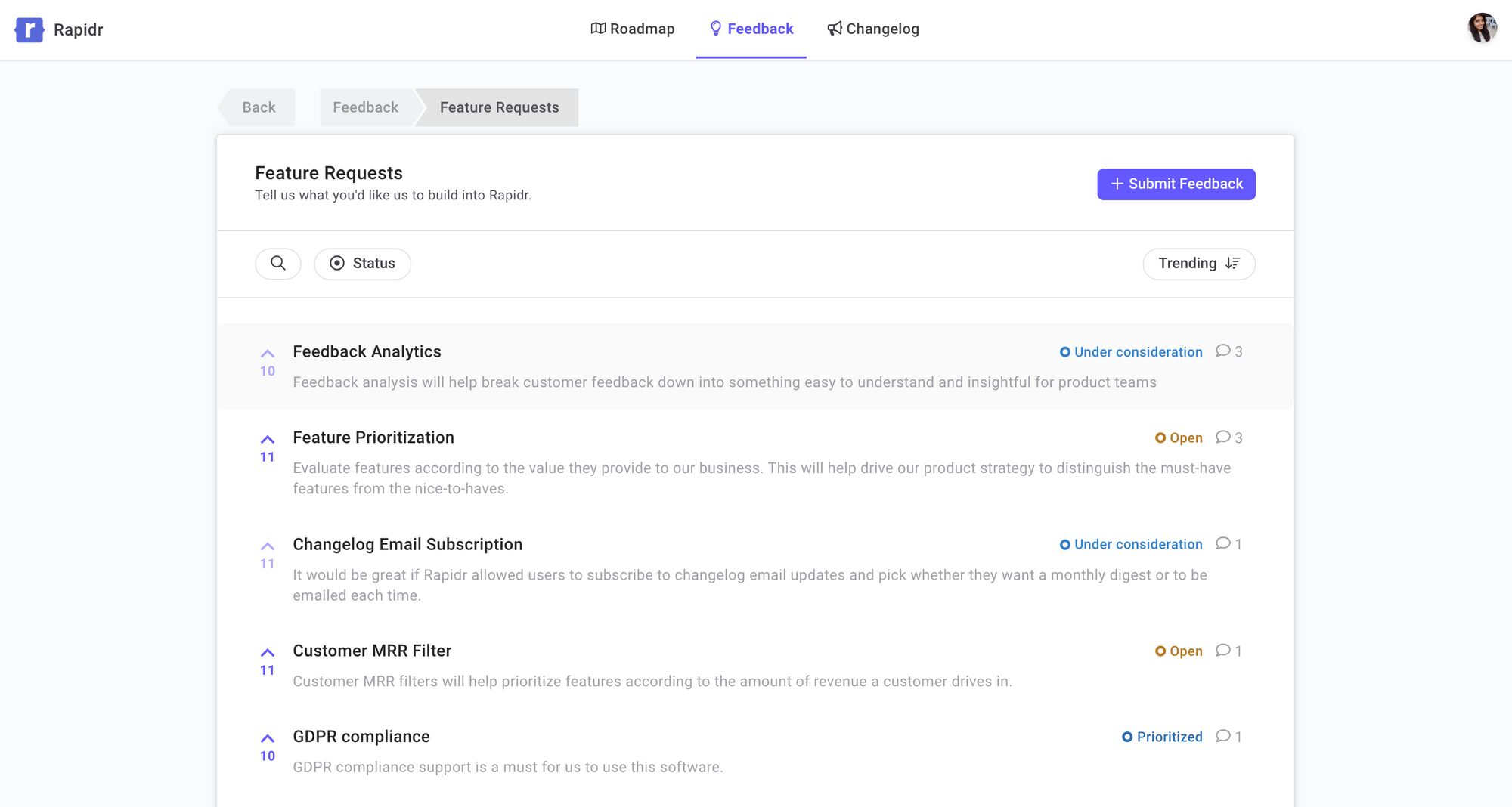
5. Feature Prioritization: Based on feedback and research, deciding which features to include in the product, which to prioritize, and which to exclude.
Rapidr provides a feature request tracking and management system solely for this purpose. Use votes and comments within a feature request voting board to prioritize features. Evaluate, sort, and filter feature requests based on how well they map to the market, customers' needs, and your company's strengths.
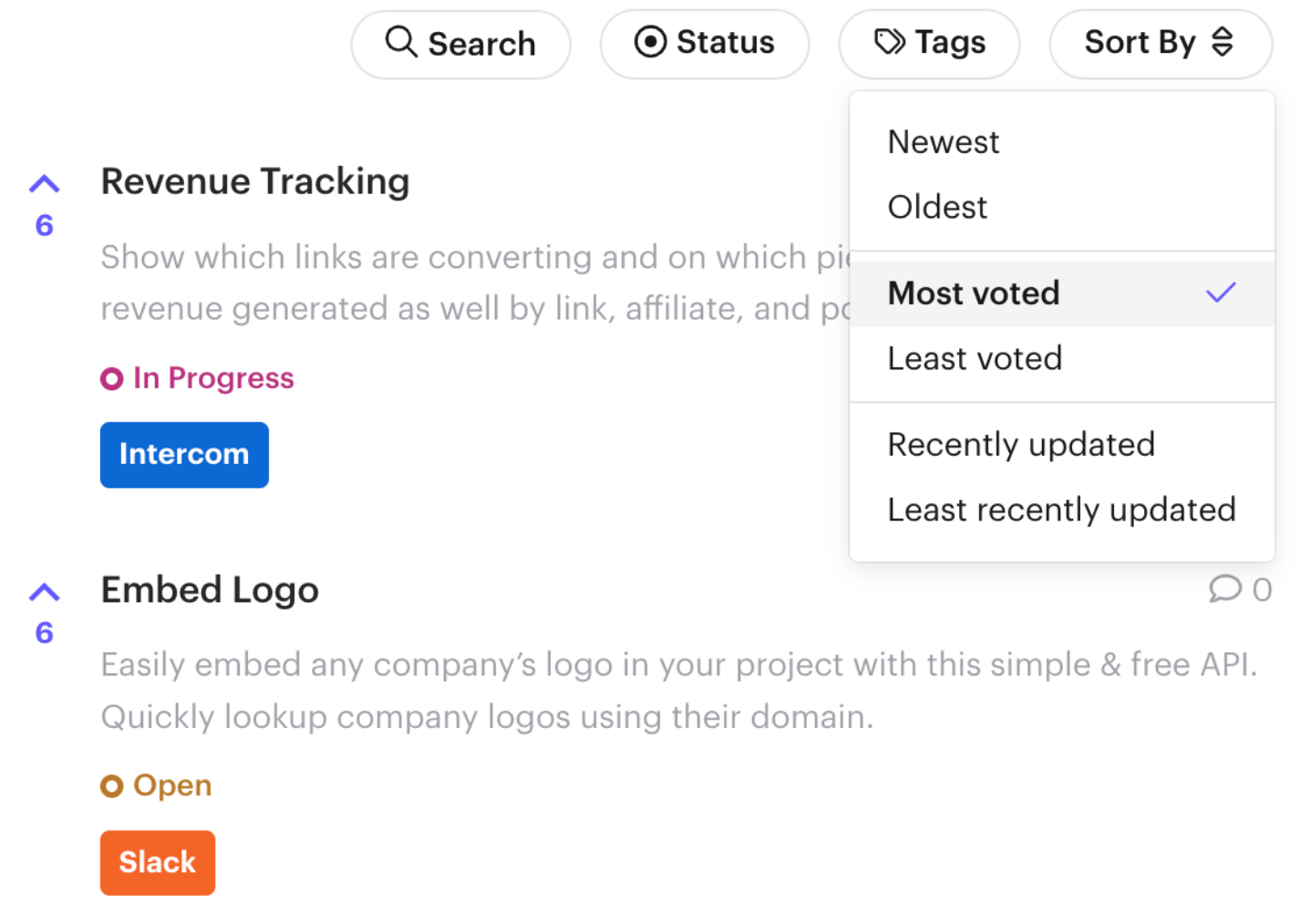
6. Pricing Research: Determining the optimal price point for the product. This involves studying competitors' pricing strategies, understanding the product's perceived value among potential users, and considering cost factors.
7. Usability Testing: Once a prototype or MVP (Minimum Viable Product) is developed, it's beta tested among users to understand its usability and any potential design or functionality issues.
8. Post-launch Feedback: After the product launch, continuous research is done to collect user feedback, monitor product performance, and make necessary improvements.
9. Product Lifecycle Management: Understanding the stages a product goes through, from introduction to growth, maturity, and decline, and making decisions accordingly.
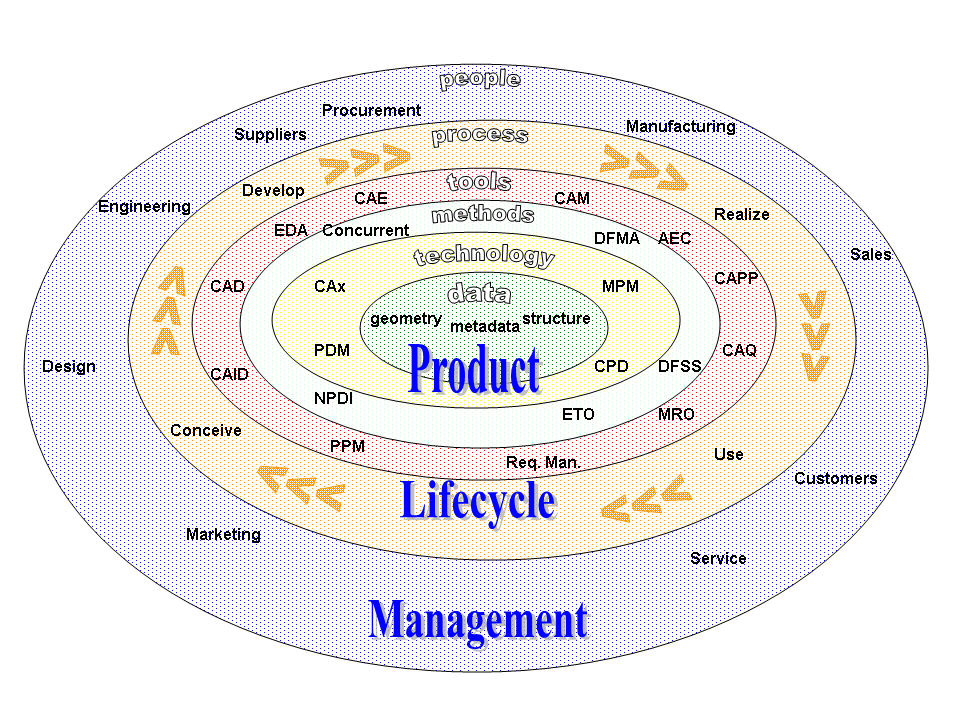
Why should Product Managers Conduct Product Research?
Product research is a foundational activity for product managers (PMs). By conducting thorough product research, companies can reduce risks associated with launching new products, ensure better alignment with market needs, increase the likelihood of product success, and attain product-market fit.
In a survey report, more than 60% of product managers responded that direct customer feedback is the source of the best product and feature ideas.
Here are compelling reasons why product managers should prioritize product research:
1. Understanding the Market: Product research provides insights into market trends, emerging technologies, and shifts in consumer behavior. It allows PMs to position their products effectively and anticipate market changes.
2. Identifying Customer Needs: PMs need to understand their users deeply. Research uncovers the target audience's pain points, desires, and needs, ensuring that the product aligns with what customers genuinely want.
3. Validating Assumptions: Assumptions can be dangerous if not validated. Product research helps test hypotheses, ensuring that decisions are based on accurate data, not just gut feelings or intuition, to avoid making mistakes.
4. Risk Reduction: Launching or updating a product involves significant resources and costs. Research reduces the risk of product failure by ensuring a genuine market demand and fit for the product.
5. Informed Decision Making: Product research provides concrete data, a foundation for making informed product decisions, from feature prioritization to design choices.
6. Building a Competitive Advantage: By understanding the competitive landscape, PMs can identify gaps in the market, differentiate their products, and highlight unique selling points.
7. Optimizing Pricing: Through research, PMs can identify the right pricing strategy by understanding customers' willingness to pay and analyzing competitor pricing.
8. Improving User Experience: Usability testing, a component of product research, identifies potential design or functionality flaws, ensuring that the end product provides an optimal user experience that enhances product adoption.
9. Prioritizing Development: Research helps determine which features or improvements will have the most significant impact, guiding resource allocation and development priorities.
10. Enhancing Marketing and Sales Efforts: Insights from product research provide valuable information for crafting marketing messages, positioning, and sales strategies.
11. Stakeholder Alignment: Presenting research findings can align stakeholders around a shared product vision and objective, from developers to executives.
12. Continuous Improvement: Post-launch research, like user feedback and analytics, ensures that products evolve based on real-world usage and feedback.
13. Building Empathy: Engaging directly with users during research helps PMs develop empathy and improve retention, which is crucial for user-centric product development.
Methods of Conducting Product Research
Product research is essential to product development and marketing, providing critical insights into user needs, market dynamics, and competitive landscapes. By embedding product research throughout the product's lifecycle, organizations remain user-centric, responsive to changes, agile in decision-making.
Surveys: Gather quantitative data from a large group of people using a combination of multiple-choice and open-ended customer feedback questions to identify patterns, preferences, and trends. Use online platforms like SurveyMonkey, Google Forms, or Typeform to create and distribute questionnaires.

Interviews: Collect in-depth qualitative insights from users to understand their needs, pain points, and motivations. Conduct one-on-one sessions, face-to-face, over the phone, or through video conferencing.
Concept Testing: Evaluate the potential success of a new product concept before it's fully developed. Present the product idea (through mockups, descriptions, or prototypes) to a target audience and gather feedback with feedback tools such as Rapidr, UserVoice, etc.
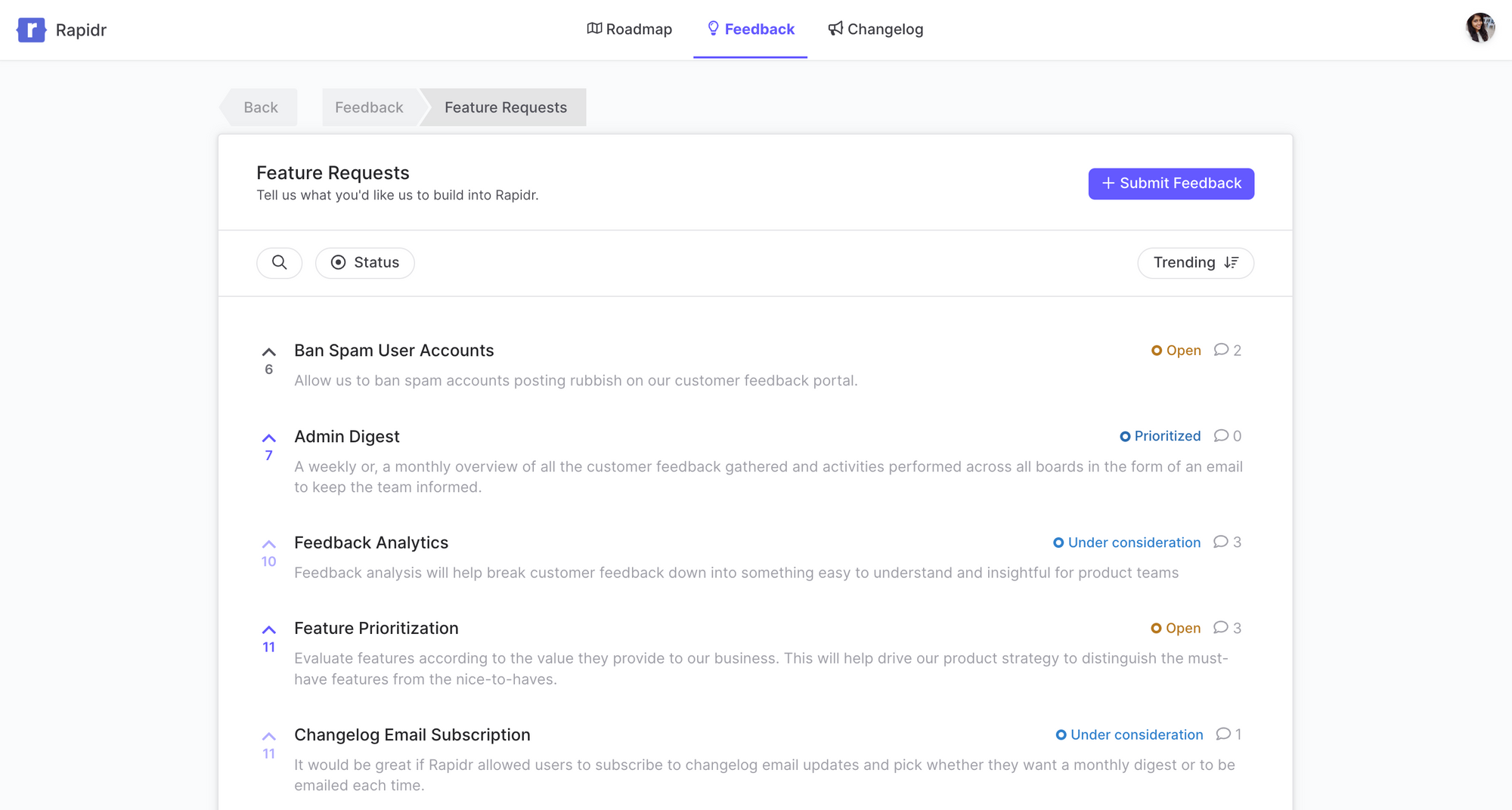
Focus Groups: Gather qualitative insights from diverse participants, facilitating discussions to uncover shared and contrasting views. Organize sessions with 6-10 participants, moderated by a trained professional, to discuss specific topics.
Usability Testing: Evaluate a product or prototype's effectiveness, efficiency, and satisfaction. Ask users to complete specific tasks on the product, observing their interactions and noting challenges or friction points.

In-app Feedback: Utilize in-app feedback platforms to ask users about their experiences in real-time. This can be done through chatbots or pop-up messages, prompting immediate feedback while the user is engaged with the product.
Rapidr's deep Intercom Integration makes it easy for your product and customer success teams to track incoming feedback on Intercom.

Competitive Analysis: Assess the strengths and weaknesses of current and potential competitors. Identify main competitors and evaluate their products, market positioning, features, and customer reviews.
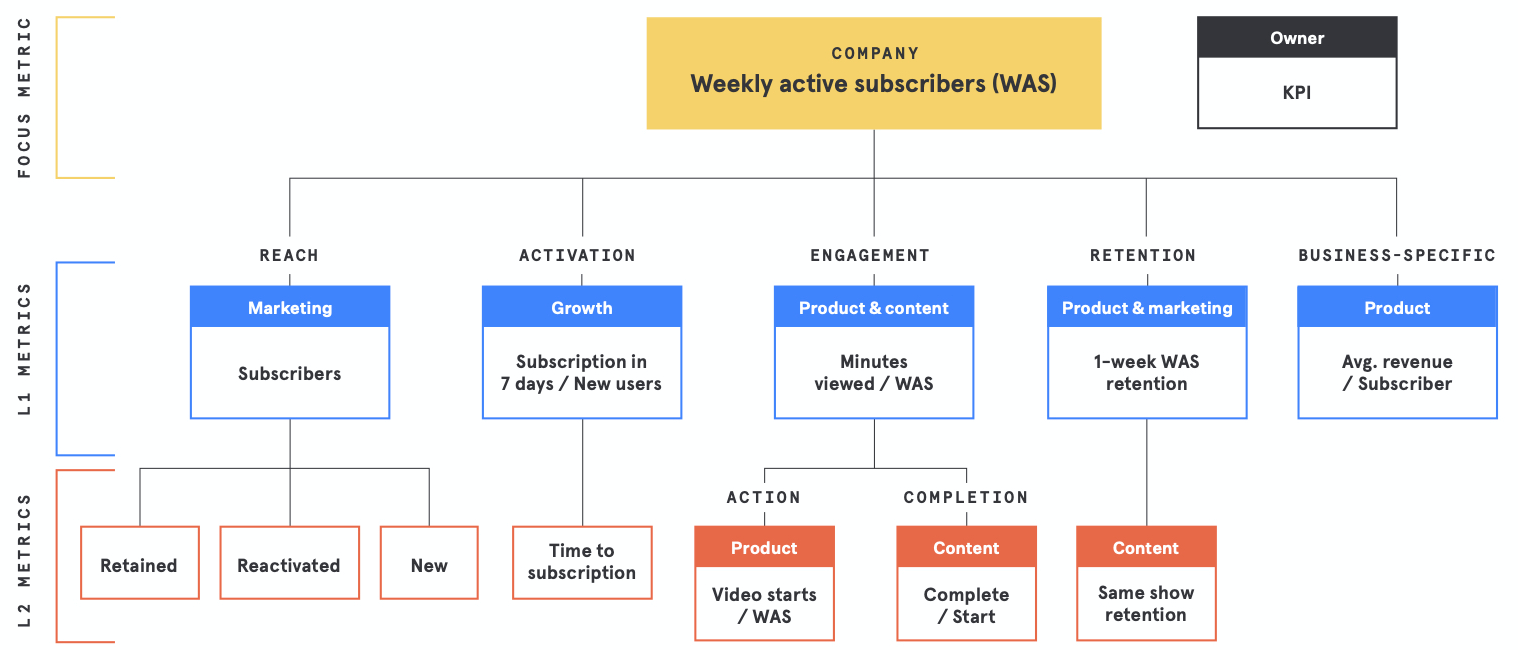
A/B Testing (or Split Testing): Compare two or more versions of a product or feature to determine which performs better regarding user engagement, conversion, or other KPIs. Present versions to similar user groups and analyze each performance metric.
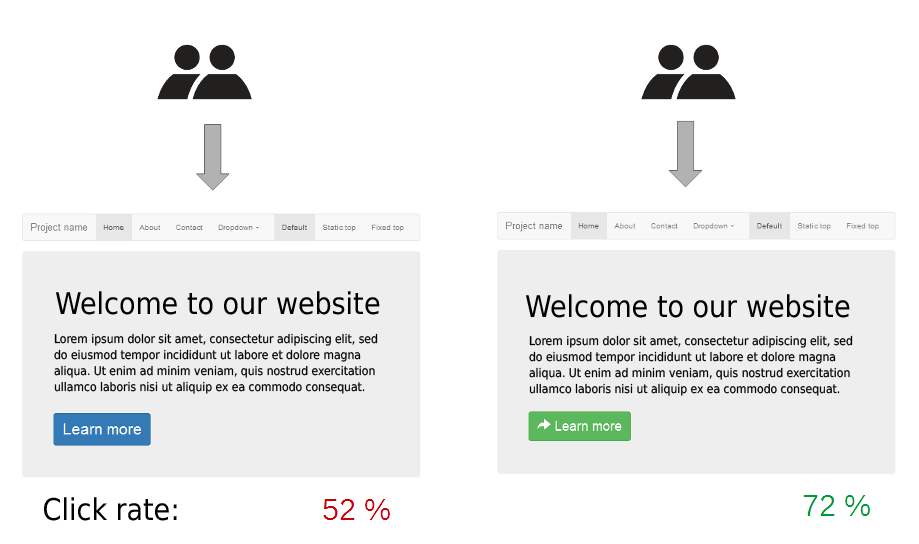
Prototyping and MVPs (Minimum Viable Products): Test product hypotheses with the least amount of work. MVPs help to validate demand, functionality, or other critical assumptions. Develop a basic product version and release it to a subset of users or the broader market in online community feedback forums.
When to Perform Product Research?
Product research is not confined to a single product lifecycle phase. Still, it should be conducted at multiple stages to ensure the product remains relevant, competitive, and aligned with user needs. Here's a breakdown of when to perform product research:
Idea Conception & Validation: Before any development begins, when you have a product idea or concept. To validate assumptions and ensure there's a genuine need in the market for the proposed solution.
Pre-Development & Design: After idea validation, full-fledged development starts.To refine feature sets, prioritize functionalities, and design a user-centric interface.
Prototype & MVP (Minimum Viable Product) Phase: When a basic version or prototype of the product is ready. To gather initial feedback, test usability, and identify potential improvements before a wider release.
Pre-Launch: Immediately before the product's market launch. To gauge market reception, fine-tune marketing messages and ensure the product meets the target audience's expectations.
Post-Launch: After the product hits the market. To monitor user satisfaction, identify unforeseen issues, and understand how real-world usage might differ from expectations.
Any Major Update/Release: Before rolling out significant updates, changes, or new features. Ensure these changes align with user needs and not introduce new issues or bugs.
How to Conduct Product Research?
Product research systematically gathers, analyzes, and interprets data about a product's market, users, and competition. The key is to remain user-centric and data-driven in all product decisions, a significant challenge product managers face.
Here's a step-by-step guide on how to conduct effective product research:
1. Define Your Objectives
Start by understanding what you want to achieve with your research. This could be identifying market gaps, understanding user needs, validating a product idea, or improving an existing product.
2. Identify Your Target Audience
Clearly define the population segment you intend to research, create user personas, and map the customer journey. Consider demographics, psychographics, behaviors, and other relevant criteria.
3. Choose Research Methods
- Qualitative methods (e.g., interviews, focus groups, ethnographic studies) help gain deeper insights into user motivations, feelings, and pain points.
- Quantitative methods (e.g., surveys, feedback portals, analytics) provide numerical data for generalizing results or identifying patterns.
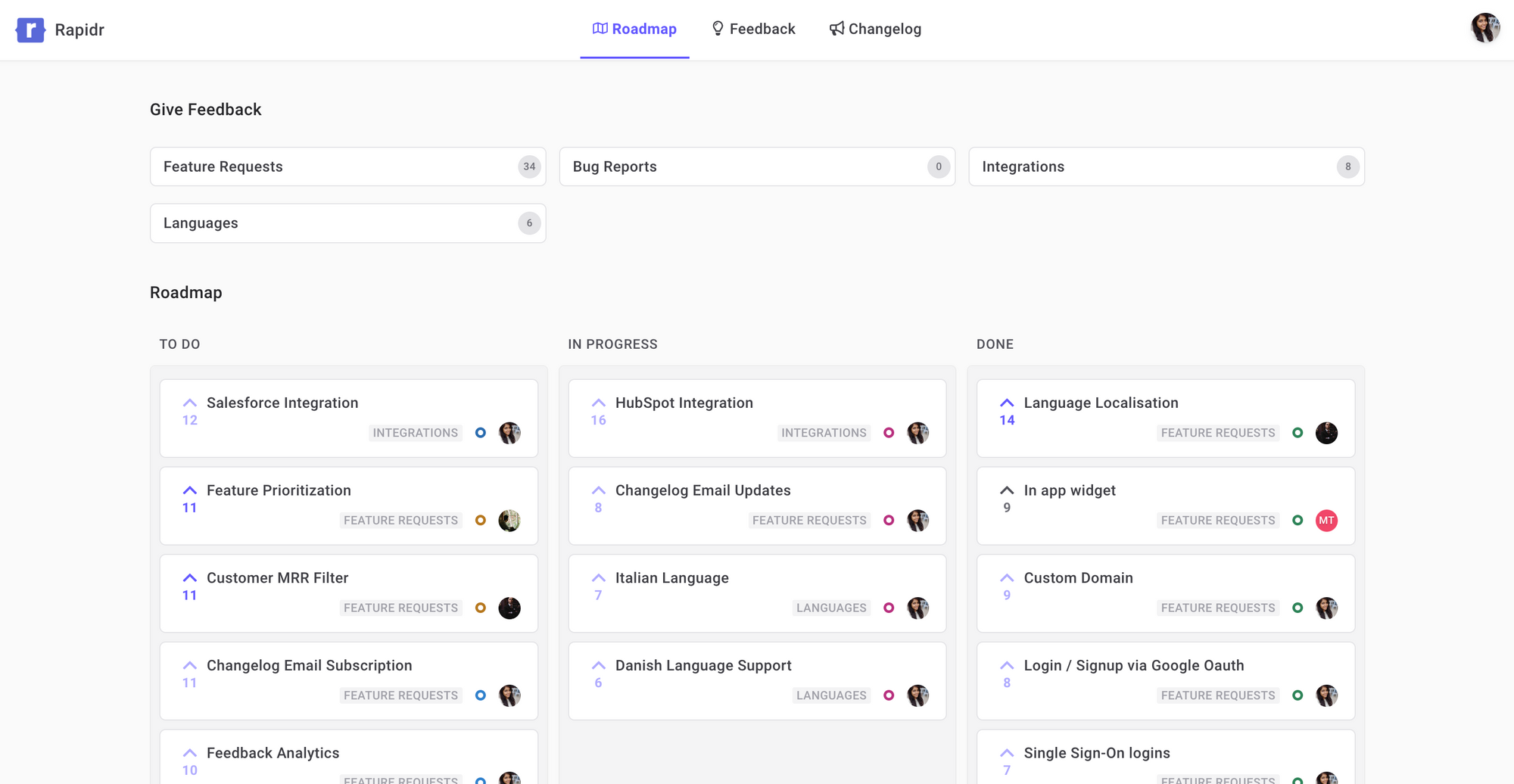
4. Select Product Research Tools
Depending on your chosen methods, you might need product research tools for surveys (like SurveyMonkey), feedback management (like Rapidr), usability testing (like Lookback.io), analytics (like Google Analytics), etc.
5. Conduct Product Research
- Create the necessary materials, such as survey questionnaires, interview scripts, or usability test scenarios. Ensure questions are clear, unbiased, and designed to extract meaningful insights. Administer surveys or questionnaires.
- Recruit participants from your target audience for targeted feedback. This can be done using recruitment platforms, social media, online community feedback forums, or your customer base.
- Conduct interviews, either face-to-face, over the phone, or through video calls.
- Hold focus groups to gather collective opinions.
- Perform usability tests to observe how users interact with prototypes or existing products.
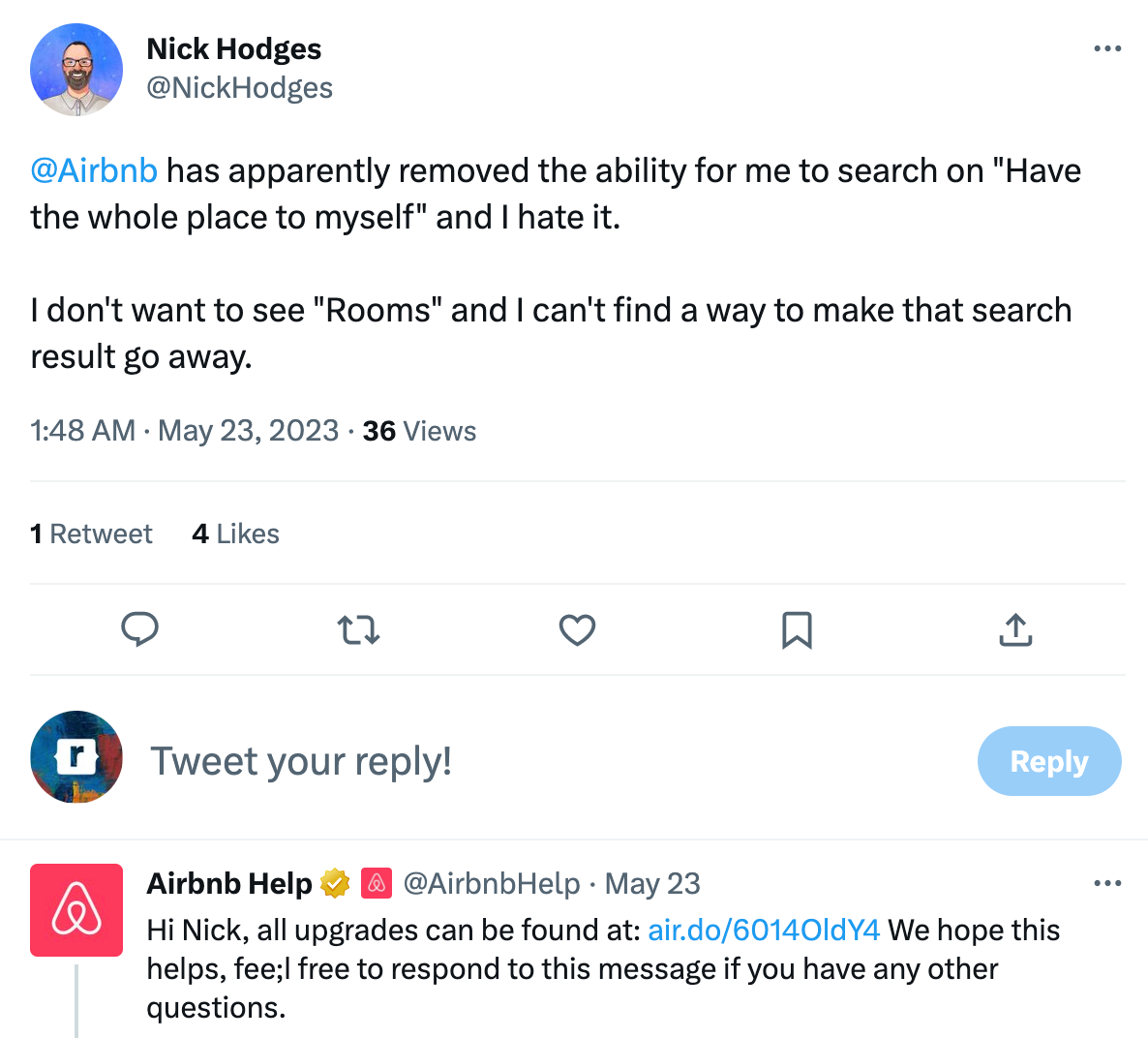
6. Analyze the Data
- Start by revisiting the collected data and research insights. Organize them systematically, focusing on the key findings that align with your product's goals and vision.
- Perform ideation to seek the most effective solution. All feedback is valuable, but not all feedback needs immediate action. Classify insights based on urgency, feasibility, and alignment with business goals.
- For qualitative data, identify patterns, themes, and notable quotes.
- For quantitative data, use user segments and statistical methods to interpret results and find correlations and conclusions.
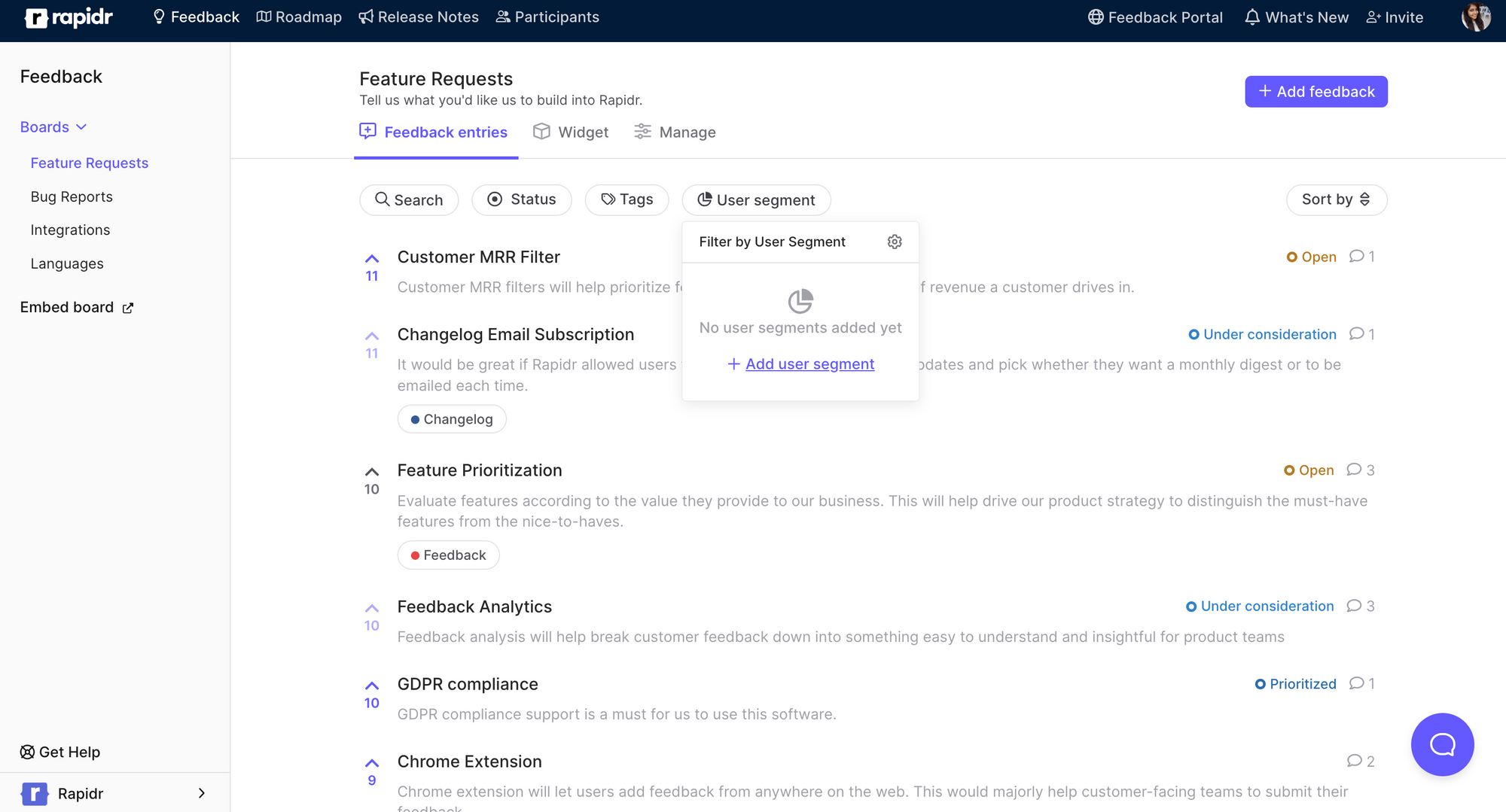
9. Update Stakeholders
Organize your insights into a structured format. This could be in the form of reports, presentations, or visualizations. Highlight critical findings, actionable recommendations, and areas that need further exploration.
Share your findings with team members, executives, and other stakeholders to drive decision-making. When you release new features or updates, reach out to users to see how they find them. Ensure that every product team member, from designers to developers to marketers, understands the changes and the rationale behind them. Clear communication is key to cohesive development, even if it means responding to negative feedback.

10. Iterate & Plan Product Development
Use the insights gathered to make informed decisions about product development, marketing strategies, and other related areas. Quickly create solution prototypes to test with a set of customers. This process helps visualize changes, making spotting potential challenges or improvements easier.
Calculate the effort required to build a solution and perceived market size based on the persona. Use prioritization frameworks (with calculations made) to determine what validated product opportunities to pursue next.
11. Create Roadmap & Repeat Based on Insights
Plot the ideas, tasks, and opportunities in a product roadmap. Introduce new milestones, revise timelines, and allocate resources accordingly. Product research is not a one-off activity. As the product evolves and the market changes, conduct ongoing research to align with user needs and market dynamics.
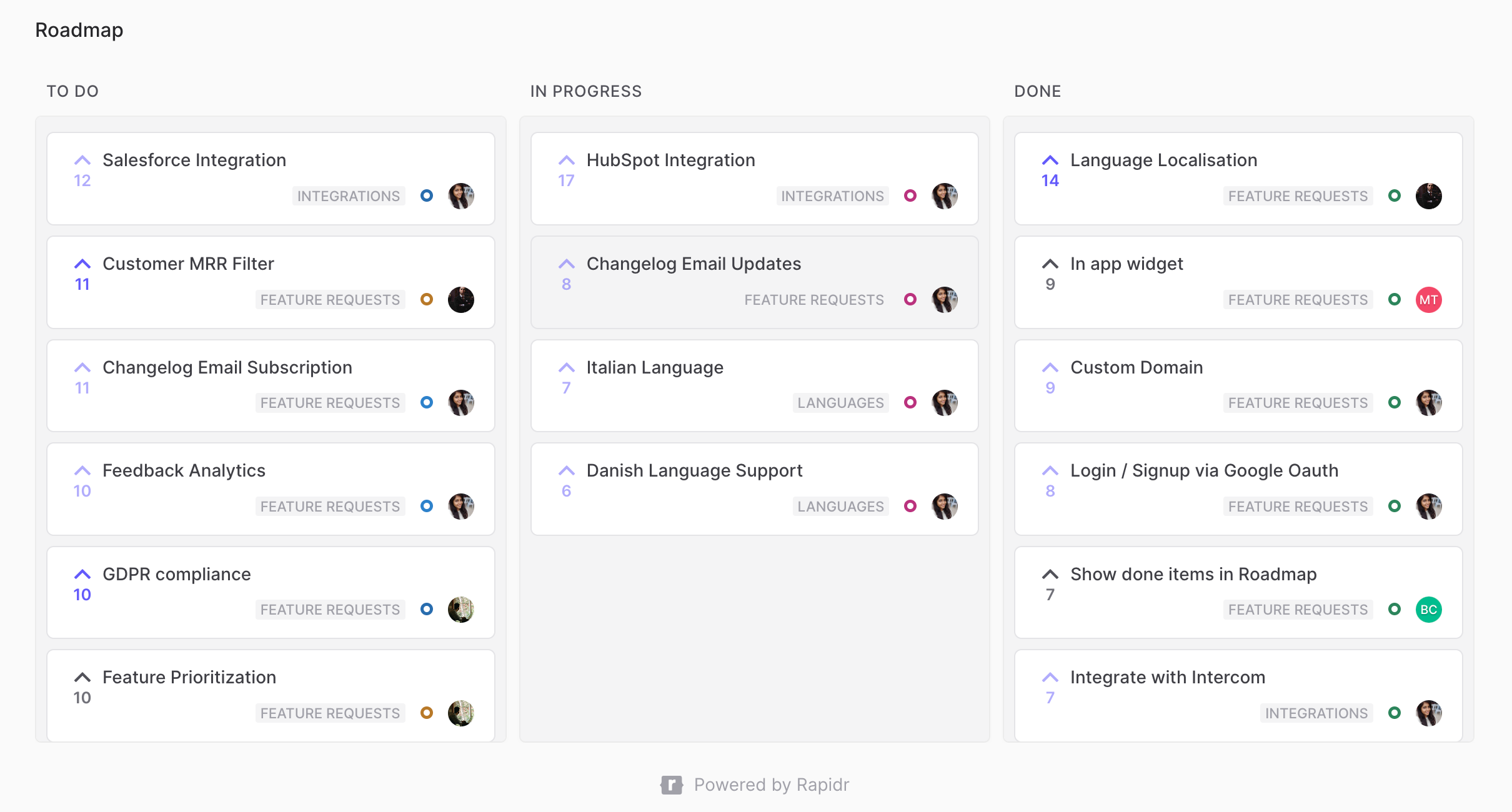
Use Rapidr to Make Your Product Research Effective
Product research's essence lies in understanding and resonating with the audience at every step of the product's journey. Thus, it's an indispensable cornerstone for product success.
With data-driven insights, actionable feedback, and a deeper understanding of market dynamics, product teams can make informed decisions, pivot when necessary, and continually refine their offerings. In the ever-changing marketplace, listening to your users isn't just a best practice—it's the lifeblood of product relevance and longevity.
While there are many customer feedback tools to help you capture, organize, and prioritize feedback, consider the one that enables you to uncover the insights from the feedback and shape your product research.
Incorporate customer feedback into your product research process with Rapidr.
- Set up a customer feedback system.
- Collect actionable feedback from customers and teammates with feedback portals and in-app feedback widgets.
- Analyze, prioritize, and categorize ideas and feedback to make sense of them.
- Act and create a product development plan with a roadmap.
- Announce new features and product updates to close the feedback loop.
With Rapidr, you can collect, analyze, and organize feedback and engage with customers as their feedback moves through the development process. Sign up for free and set up a complete customer feedback system to inform and enhance your product research process.

